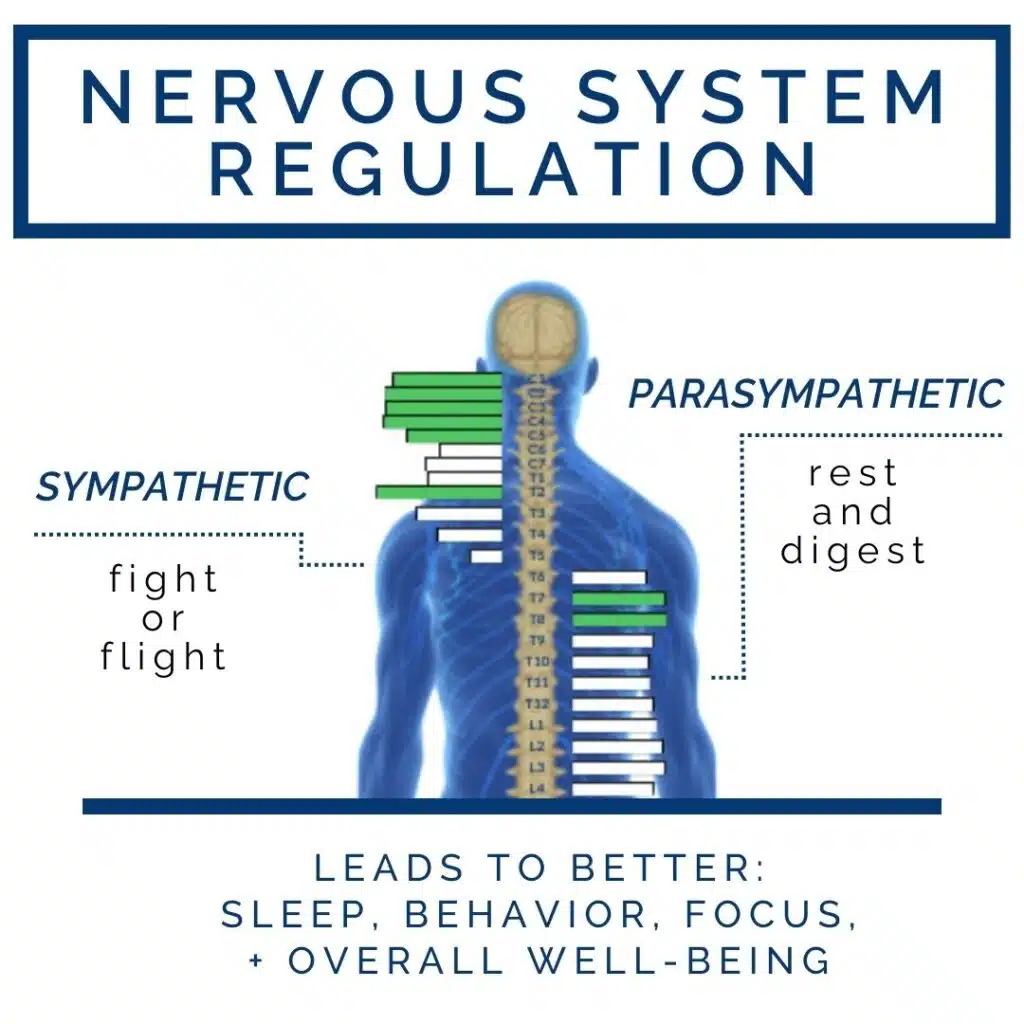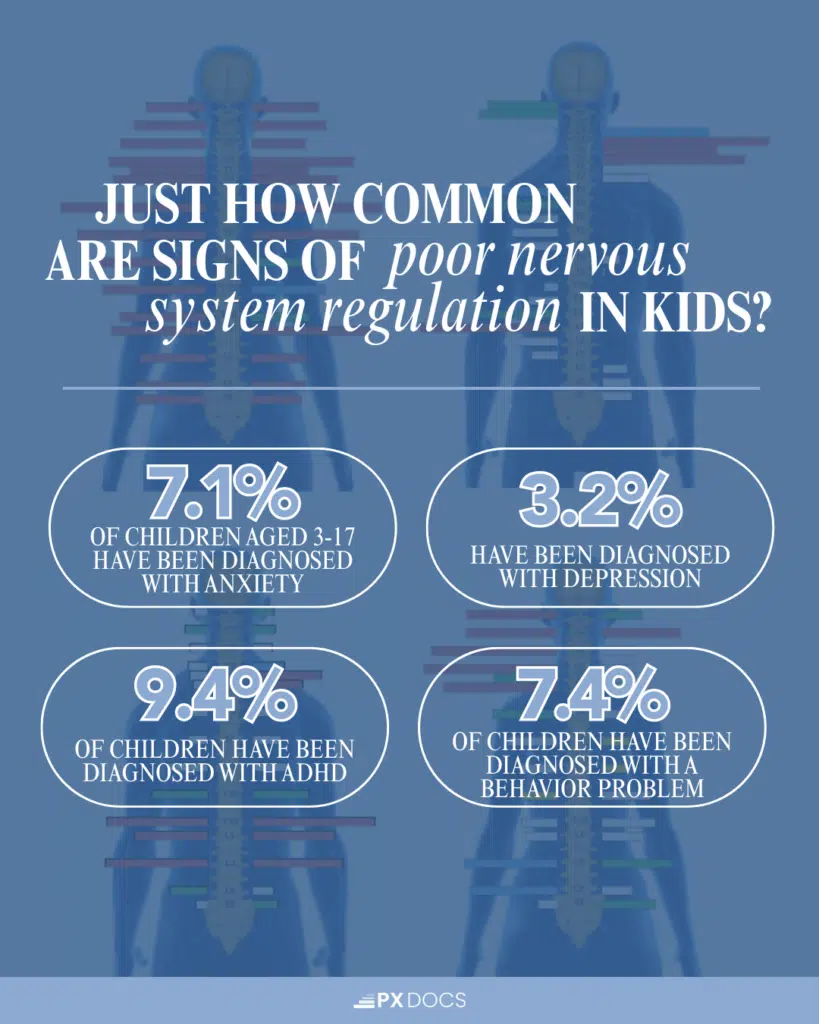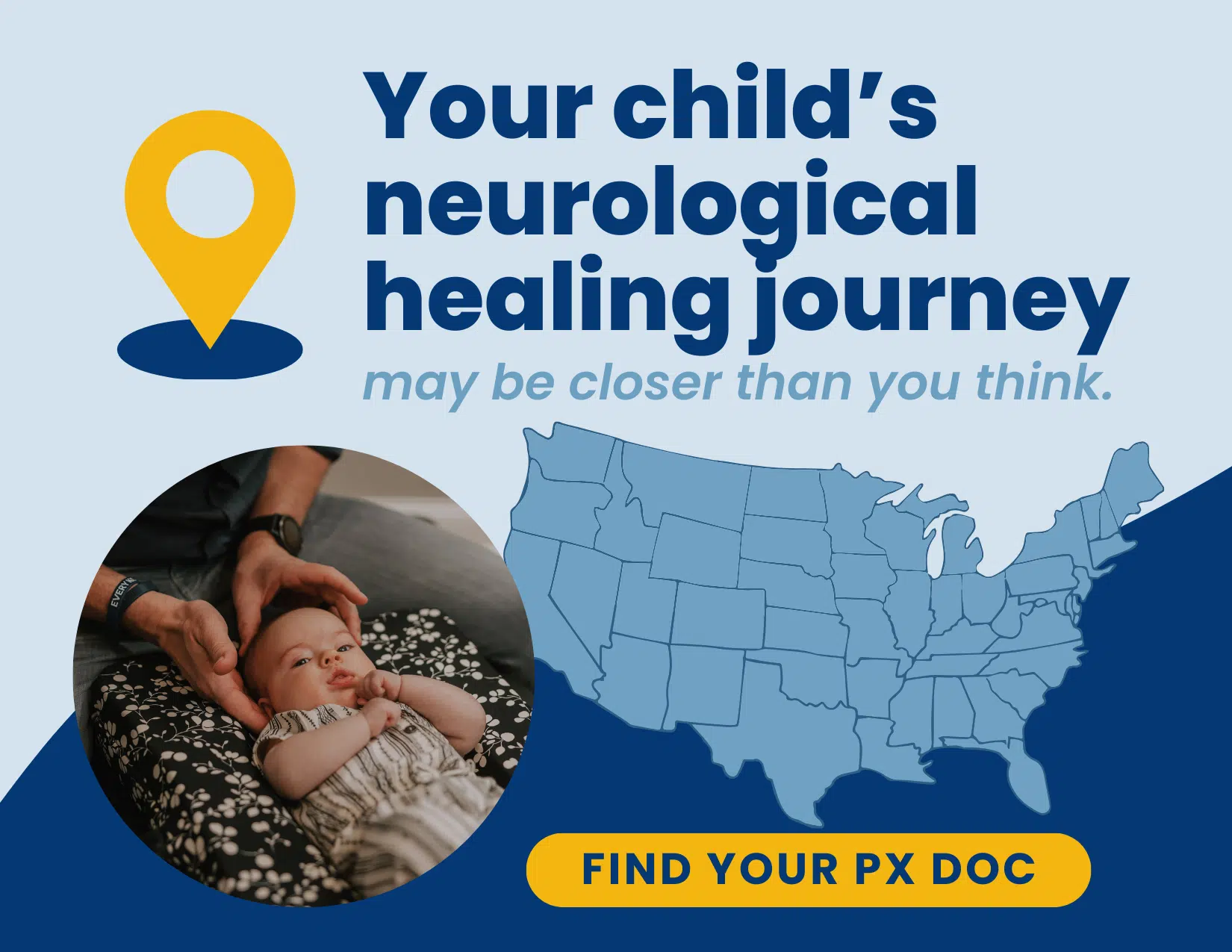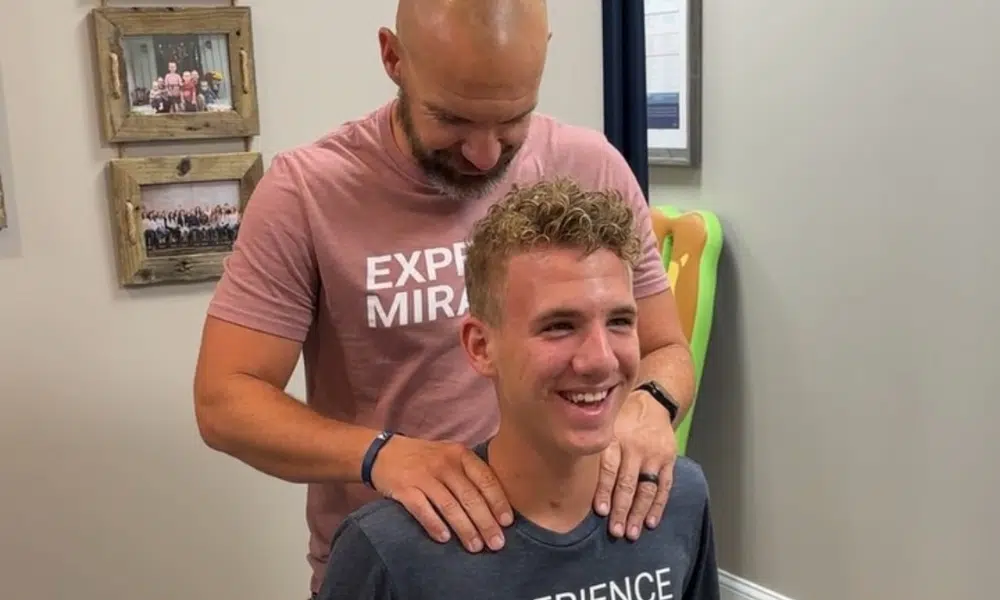For parents, there’s nothing more heartbreaking than watching your child struggle with challenges you can’t seem to solve. Maybe it’s frequent meltdowns and tantrums that disrupt daily life. Or difficulty focusing and keeping up in school. Perhaps it’s digestive issues, chronic sickness, anxious thoughts, or trouble connecting with peers.
You’ve searched for answers but keep coming up short.
If this sounds all too familiar, you’re not alone.
A staggering 1 in 6 children in the US have a diagnosed developmental disability, according to the CDC. Even more alarming, rates of childhood anxiety, depression, and other mental health challenges are on the rise, with up to 1 in 5 kids affected. And depending on what research you cite, over 40-50% of US children now have at least one chronic illness, usually multiple.
While these statistics are concerning, there is hope. Emerging research points to a common thread underlying many of these challenges: nervous system dysregulation. When a child’s nervous system is out of balance, it can manifest in a wide range of physical, emotional, and behavioral signs that interfere with their ability to learn, grow, and thrive.
Nervous system dysregulation alters everything from gut and immune function, to motor planning and sensory processing, to even our children’s social, emotional, and behavioral abilities. It also plays a significant role in developmental delays, speech delays, and so much more.
The good news is that by understanding the critical role of nervous system regulation in your child’s health and development, you can take steps to restore balance and unlock their full potential. In this article, we’ll dive into what nervous system regulation is, how it can go haywire, and, most importantly, what you can do to support your child’s well-being from the inside out.
If you’ve been looking for a natural, drug-free method to help your child overcome challenges and thrive, you’ve come to the right place.
Understanding Nervous System Regulation
At its core, nervous system regulation refers to your body’s ability to smoothly adjust and adapt to life’s changing demands. It’s what allows you to go from feeling stressed or threatened to feeling calm and safe again. And it’s absolutely essential for healthy growth and development in children.
You can think of the nervous system as the body’s command center. It’s this vast, intricate network of cells and fibers that controls everything from basic functions like breathing and digestion to complex processes like learning and social bonding. At any given moment, your nervous system is processing a constant stream of information from both inside and outside your body, using it to keep all your systems running smoothly.
This incredible coordination happens largely thanks to two key divisions of the nervous system:
- The central nervous system (CNS), which includes the brain and spinal cord
- The peripheral nervous system (PNS), which connects the central nervous system to the rest of the body
Within the peripheral nervous system is the Autonomic Nervous System (ANS), which plays a starring role in regulation. The autonomic nervous system controls all the body processes that happen automatically without you having to think about them. It’s made up of two branches that work together to keep you in a state of balance or homeostasis:
- The sympathetic nervous system (SNS), which activates the “fight or flight” response in times of stress
- The parasympathetic nervous system (PNS), which promotes “rest, regulate, and digest” functions during times of safety and calm

When your child faces a stressful situation, whether it’s a scary dog or a pop quiz, their sympathetic nervous system kicks into gear. Their heart rate rises, their muscles tense, their pupils dilate—all to prepare them to fight or flee from the perceived threat. Then, once the danger has passed, the parasympathetic system takes over, slowing the heart rate, relaxing the muscles, and returning the body to a state of calm.
This delicate dance between the sympathetic and parasympathetic nervous systems happens countless times throughout the day. And when it’s working well, it equips your child to handle life’s ups and downs with resilience. Just as importantly, it creates the conditions for all the “rest, regulate, and digest” processes that are vital for your child’s health, like nourishing their cells, fighting off germs, mending injuries, and growing new neural connections.
At the heart of healthy parasympathetic nervous system functioning is a remarkable nerve called the vagus nerve. This long, wandering network of fibers carries signals between the brain and several key organs, including the heart, lungs, and digestive tract. Often called the “nerve of compassion,” it also plays a key role in your child’s social engagement system, influencing their facial expressions, vocal tone, and ability to tune into others.
When the vagus nerve is toned and active, it acts like a natural equalizer—slowing heart rate, lowering blood pressure, and reducing inflammation. It quite literally soothes your child’s nervous system, creating a sense of safety and calm that promotes growth and healing. A healthy vagal tone leads to better emotional regulation, closer relationships, and even stronger immune function.
Just how prevalent are signs of poor nervous system regulation in kids? The statistics tell a sobering story:
- 7.1% of children aged 3-17 have been diagnosed with anxiety
- 3.2% have been diagnosed with depression
- 9.4% of children have been diagnosed with ADHD
- 7.4% of children have been diagnosed with a behavior problem
While these conditions have many complex causes, difficulty with nervous system regulation is emerging as a common thread. When a child’s autonomic nervous system is out of balance, and their vagus nerve is underactive, it sets the stage for a host of cognitive, emotional, social, and behavioral challenges.
The ripple effects extend beyond the individual child, creating stress and instability for the whole family. According to a recent study, parents of children with mental health difficulties report higher levels of stress, anxiety, and depression compared to parents of typically developing children. They also experience more parenting challenges and lower overall family functioning.
If you have a child who is struggling with any of these challenges, learning about nervous system regulation is a powerful first step. By understanding the processes unfolding inside your child’s body, you can start to see their behavior through a new lens—not as a reflection of who they are, but as a sign their system needs support.
When a Child’s Nervous System Veers Off Course
Just as a well-regulated nervous system sets the stage for a child to thrive, a dysregulated nervous system can have far-reaching effects on their health, behavior, and development.
Nervous system dysregulation refers to an imbalance in the autonomic nervous system that makes it difficult for the body to maintain equilibrium in response to stress. Instead of being able to efficiently shift between “fight or flight” and “rest and digest” modes, the system gets stuck in a state of hyperarousal or hypoarousal.
Some key signs that a child’s nervous system may be dysregulated include:
Heightened anxiety, fear, or worry
- Frequent meltdowns or tantrums, often in response to minor frustrations
- Difficulty self-soothing or calming down once upset
- Hyperactivity or impulsivity
- Struggles with focus, attention, and following directions
- Sensory sensitivities (overwhelm in response to bright lights, loud noises, clothing tags, etc.)
- Poor sleep (difficulty falling or staying asleep, frequent night waking)
- Digestive problems like constipation, diarrhea, or stomach pain
- Picky eating or oral aversion
- Frequent illnesses or lowered immune function
- Delays in social-emotional skills like eye contact, joint attention, and cooperative play
If you’re noticing a cluster of these signs in your child, it’s natural to feel concerned and confused. But it’s important to remember that these behaviors and challenges are not a reflection of your child’s character or your parenting. They are actually a brilliant attempt by your child’s nervous system to communicate that it needs support.

Unraveling the Roots of Dysregulation: The “Perfect Storm”
So, what causes a child’s nervous system to become dysregulated in the first place? At PX Docs, we often refer to the “Perfect Storm“—a combination of physical, chemical, and emotional stressors that can overwhelm a child’s developing nervous system, beginning as early as conception.
One major factor is the mother’s health and stress levels during pregnancy. Maternal stress exposure has been linked to changes in fetal brain development. This can increase the risk of conditions like Anxiety Disorder, ADHD, and Autism Spectrum Disorder. High levels of the stress hormone cortisol in the mother’s body cross the placental barrier, potentially altering the programming of the baby’s nervous system.
Birth trauma and interventions are another key piece of the “Perfect Storm.” Procedures like C-section, forceps or vacuum delivery, and induction or an epidural can put significant strain on a baby’s head, neck, spine, and spinal cord. This physical stress can lead to misalignments or subluxations in the upper cervical region, interfering with the vital brain-body communication highway that runs through this area.
Early childhood experiences round out the trifecta of factors that can derail a child’s nervous system development. Research shows that exposure to adverse childhood experiences (ACEs) like abuse, neglect, parental mental illness, and domestic violence negatively impact response systems, leading to nervous system dysregulation.
But adversity doesn’t have to be extreme to have an impact. Simply having a highly sensitive nervous system can make the ordinary stressors of childhood feel overwhelming for some kids. Factors like inadequate sleep, processed foods, environmental toxins, limit-pushing behaviors, overstimulation, and countless others can pile up, making it harder and harder for the nervous system to find its footing.
The Lifelong Impacts of a Dysregulated Nervous System
When this “Perfect Storm” of stressors persists without intervention, it can lead to a state of chronic dysregulation with ripple effects across a child’s lifespan.
In the short term, kids with dysregulated nervous systems often struggle to meet age-appropriate milestones. They may have trouble learning to self-soothe as infants, mastering toileting or impulse control as toddlers, or navigating friendships and academic demands as school-aged children. This can lead to increasing feelings of frustration, shame, and self-doubt.
Left unchecked, the impacts of dysregulation can extend into adulthood, paving the way for a higher risk of both mental and physical health problems. Research has linked early nervous system dysregulation to an increased likelihood of conditions like Anxiety Disorder, agoraphobia, and Panic Disorder later in life.
The effects of dysregulation can even be passed down through generations via a phenomenon known as epigenetics. Studies have found that children of parents with a history of early adversity or trauma display altered stress response patterns, even if they haven’t experienced adversity themselves. In other words, stress in one generation can leave a lasting imprint on the next.
At first glance, this information may feel overwhelming or disheartening. But by understanding the factors that can shape your child’s nervous system from a young age, you’re already taking a powerful step in the direction of healing.
The Gut-Brain Connection: A Crucial Key to Nervous System Health
If you’re a parent who has been searching for answers to your child’s struggles, you’ve likely come across the topic of gut health. Maybe you’ve read about the microbiome—the trillions of bacteria, fungi, and other microbes that live in the digestive tract—and how an imbalance in these crucial critters can contribute to everything from tummy troubles to behavioral meltdowns.
You may have even tried your hand at dietary changes, cutting out gluten or dairy or adding in probiotic-rich foods to help heal your child’s gut. And while you might have seen some improvements, it’s also common to feel like you’re constantly fighting an uphill battle, with new traits cropping up as soon as you get others under control.
If this scenario sounds familiar, you’re far from alone. The reason these gut-focused interventions may feel like a game of whack-a-mole is that there’s a piece of the puzzle that often gets overlooked: the nervous system’s foundational role in regulating digestion and microbiome balance.
The Vagus Nerve: Your Gut-Brain Superhighway
The gut and the brain are intricately connected, engaging in constant back-and-forth communication. In fact, the gut is often referred to as the “second brain,” containing over 100 million neurons that produce many of the same neurotransmitters as the brain, like serotonin and dopamine.
At the heart of this gut-brain axis is the vagus nerve—that long, wandering nerve that serves as the main line of communication between the brain and the digestive tract. The vagus nerve is like a superhighway, sending signals in both directions to keep things running smoothly.
When your child feels butterflies in their stomach before a big presentation or loses their appetite when they’re upset, that’s the gut-brain connection in action. But this communication system is about far more than just relaying messages. It actually plays a crucial role in regulating the function of the entire digestive system.
The vagus nerve is a key component of the parasympathetic “rest, regulate, and digest” response. When it’s activated, it sends signals to increase stomach acid secretion, stimulate the muscles of the digestive tract to contract and move food along, and trigger the release of digestive enzymes from the pancreas.
In other words, a well-functioning vagus nerve is essential for proper digestion and nutrient absorption. It helps create the optimal conditions for a healthy balance of gut bacteria to thrive. It also plays a big role in preventing leaky gut and inflammation, which have been linked to a variety of mental and physical health challenges.
Dysregulation: The Hidden Roadblock to Gut Healing
So what happens when the vagus nerve and the rest of the nervous system are stuck in a state of dysregulation? Essentially, it throws a wrench in the entire gut-brain communication system.
When the sympathetic “fight or flight” response is dominant, as is often the case in dysregulation, it puts the brakes on all those crucial “rest, regulate, and digest” functions. The muscles of the digestive tract can’t contract properly, leading to issues like constipation or diarrhea. The stomach may not produce enough acid, making it harder to break down food and absorb nutrients. And the delicate balance of the microbiome can get thrown off, allowing harmful bacteria to overgrow and crowd out beneficial strains.
Over time, this can lead to chronic digestive issues, nutrient deficiencies, and systemic inflammation—all of which can have far-reaching effects on a child’s mood, behavior, and overall development.
This is why so many parents feel stuck in a vicious cycle of gut-related challenges, even after making dietary changes. If the underlying nervous system dysregulation isn’t addressed, it’s like trying to fill a leaky bucket. No matter how much good stuff you pour in, it’s going to keep draining out until you plug the holes.
Supporting Your Child’s Gut-Brain Axis
The good news is that by supporting your child’s nervous system regulation, you can create a solid foundation for gut health and microbiome balance. Just as a dysregulated nervous system can throw digestion off track, a well-regulated nervous system can help everything work more smoothly.
So, where do you start? First and foremost, it’s important to remember that gut health and nervous system health are deeply intertwined. There’s often a chicken-and-egg question of which came first—did dysregulation lead to gut issues or vice versa? The truth is it’s often a bit of both, with imbalances in one system fueling imbalances in the other.
That means that while supporting your child’s gut through diet and targeted supplements can be incredibly helpful, it’s equally important to address the nervous system piece of the puzzle. This is where Neurologically-Focused Chiropractic Care can be a game-changer.
By identifying and correcting areas of subluxation and nervous system interference, pediatric chiropractors who specialize in this approach can help restore optimal function to the vagus nerve and the rest of the gut-brain axis. This, in turn, can help your child’s body respond better to all the healthy foods and gut-supportive nutrients you’re working so hard to provide.
The PX Docs Approach to Nervous System Regulation
As we’ve explored throughout this article, nervous system dysregulation is at the root of many common childhood challenges, from anxiety and ADHD to digestive issues and sleep problems. Yet, in the conventional medical model, these signs are often cared for as isolated issues, with medications prescribed to mask surface-level manifestations while underlying imbalances go unaddressed.
If you’ve ever felt like you’re playing a never-ending game of whack-a-mole, chasing solutions without getting to the heart of your child’s struggles, you’re not alone. That’s where the PX Docs approach of how to regulate your nervous system comes in.
Addressing the Root Cause
We recognize that lasting change requires getting to the root of the problem. Our approach on how to regulate your nervous system is grounded in the understanding that it is the master control center of the body, regulating every function and influencing every aspect of health and development.
When the nervous system is stuck in a state of dysregulation due to subluxation, birth trauma, or other stressors, it can manifest in a wide array of signs, from emotional reactivity to immune dysfunction. Attempting to care for these signs without addressing the underlying nervous system imbalances is like trying to fix a cracked foundation by patching the walls. It might provide temporary relief, but the structural issues remain.
Rather than chasing signs, we focus on identifying and correcting the areas of nervous system dysfunction and interference that are preventing your child’s body from functioning optimally. Our goal is to restore the innate capacity for self-regulation and resilience that exists within every child.
So, what does that look like in practice? It starts with a deep dive into your child’s unique story and a comprehensive assessment of their nervous system using cutting-edge technology.
The Power of INSiGHT
One of the key tools PX Docs practitioners use to evaluate nervous system regulation is INSiGHT scanning technology. This non-invasive diagnostic system provides a detailed snapshot of your child’s nervous system function, identifying areas of stress, tension, and imbalance that may be contributing to their challenges.
The INSiGHT scan includes three main components:
- Surface electromyography (sEMG): This measures patterns of neuromuscular tension and distortion via electrical activity along the spinal cord, providing a window into areas of chronic stress and subluxation that may be interfering with healthy nerve communication and sensory processing functions.
- Thermography: By measuring temperature differentials along the spine and spinal cord, thermography offers clues about the function of the autonomic nervous system, including areas of sympathetic dominance or parasympathetic withdrawal.
- Heart rate variability (HRV): HRV is a measure of the balance and responsiveness of the autonomic nervous system. Lowered heart rate variability is often a sign of chronic stress and dysregulation, while higher heart rate variability indicates a more resilient, flexible nervous system.
Armed with this objective data, PX Docs practitioners can pinpoint the specific areas of your child’s nervous system that need support and create a customized care plan to address those imbalances at their source.
However, the effects of these nervous system regulation techniques extend far beyond short-term relief. By providing the foundation for healthy brain-body communication from an early age, Neurologically-Focused Chiropractic Care can have a profound impact on a child’s lifelong resilience and potential.
Pictured above are two progressive NeuroThermal INSiGHT Scans on infant patient struggling with nervous system dysregulation and resultant colic, constipation, and eczema. The scan on the left shows multiple “clusters” of dysregulation, subluxation, and dysfunction, and the scan on the right shows how much the nervous system is calming and making its way back to regulation after a dozen chiropractic adjustments over the course of one month.
The Ripple Effects of Regulation
When a child’s nervous system shifts from a state of dysregulation to regulation, the benefits ripple out into every area of their life. Children with well-regulated nervous systems tend to:
- Have an easier time managing big emotions and stress
- Be more flexible and adaptable in the face of challenges
- Learn and retain information more easily
- Build healthier, more connected relationships
- Be more confident and self-assured
- Have more robust immune function and less frequent illness
- Sleep more soundly and wake feeling refreshed
- Have regular digestion and less tummy troubles
- Enjoy a greater overall sense of well-being and vitality
In short, a regulated nervous system lays the groundwork for a thriving, resilient child who is equipped to reach their full potential in all areas of life.
Finding Your Family’s Path to Regulation
If you’ve read this far, you may be feeling a mix of emotions—relief at finally having a framework to understand your child’s struggles, excitement about the possibilities for healing, and maybe a twinge of overwhelm at the thought of taking the first steps.
Take a deep breath and know that you’re doing an amazing job! Seeking answers for your child reflects profound love and dedication. Remember, you’re not alone—PX Docs around the world are here to support your family, from understanding your child’s challenges to creating a personalized plan for their health and nervous system regulation.
If you’re ready to explore whether Neurologically-Focused Chiropractic Care might be the missing piece for your child, we invite you to visit the PX Docs directory to find a qualified practitioner in your area. With extensive training in pediatric neurodevelopment, nervous system regulation, and a passion for empowering families, PX Docs are equipped to help you decode your child’s unique needs and unlock their innate capacity for regulation and resilience.
No matter where you are in your journey, know that transformation is possible. By supporting your child’s nervous system health and helping them build a foundation of regulation, you’re giving them a gift that will serve them for a lifetime.






